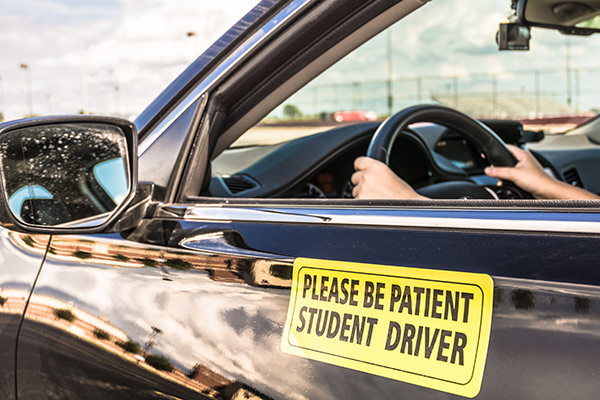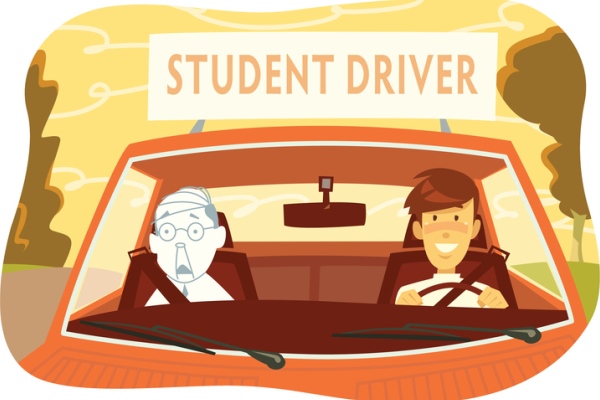Whether it’s for a teenager just starting out or an experienced driver looking to pick up some defensive-driving skills, there’s a driving school to fit every need. But how do you find the right match?
No single agency oversees driving schools nationally, so making sure you’re working with a school that’s approved or accredited in your state can take some digging. And even then, not all schools are created equal, says Alex Epstein, director of Transportation Safety for the National Safety Council. His advice: Don’t rush into deciding. “Take your time in choosing the right school,” he says, “and ask plenty of questions before you sign up.” Here’s how he recommends you go about it.
Know Your Options
Before you begin researching driving schools, consider the kind of student who will be taking the classes. Schools fall loosely into two camps:
- Driver’s education is for first-time drivers, with classroom instruction and time spent behind the wheel.
- Safety—or defensive-driving—courses are for experienced drivers who’d like to polish their skills; some are available online and may offer the benefit of reducing your insurance premium. (Find a defensive-driving course here.)
Do The Research
Check to see if the school or online course is licensed by an appropriate government agency; this can vary from state to state. For example, in Texas, it’s the Department of Licensing and Regulation; in Florida, the Department of Highway Safety and Motor Vehicles oversees the licensing of driving schools. If you don’t know where to begin, ask your state’s DMV. And for information on defensive-driving courses that could reduce your auto insurance rate with GEICO, check your state’s rules and qualifications.
Learn About The Curriculum
Some states have state-mandated curriculums, while others don’t. If you live in a state without a mandated curriculum, see if it’s been approved by a nationally recognized organization like the National Safety Council or American Safety Council.
Go See The Classroom
For non-online driving schools, go and see what they look like, suggests Epstein, and take a look at the equipment they’re using. If they have simulators, how old are they? Find out if they have textbooks—or, if the information is given in a less formal way, ask how long they’ve been in business and get references.
Check Out The Cars
Assess what kind of shape the vehicles are in (they’ve likely hit a lot of curbs) and whether they’re properly marked as student-driver cars. Also check to see if the cars have been inspected recently, because not all states require annual inspections. Epstein adds that it’s good idea to make sure the school has liability insurance so the student is adequately covered.
Ask About “Hands On” Time
“Nothing beats getting out on the road,” says Epstein. How much time in the car will the student driver get, and in what kind of conditions will they be learning? Practicing turns in a parking lot isn’t the same as making safe lane changes on a busy highway. Every driving school is different, and there are different state requirements, but Epstein says students should maximize instructional time behind the wheel and augment that with practice time.
Get To Know The Instructors
“Instructors need to be positive role models,” says Epstein. “They have to be strict as good instructors, but they also have to be able to nurture a beginner. It’s a unique quality. Not everybody is cut out for it.” Find out how driving instructors are chosen and how long they’ve been on the job. Ask if they’ve gone through criminal background checks and whether they’re certified to teach. If not, move on.
Check The Student-To-Teacher Ratio
The smaller the class the better, says Epstein, who recommends no more than 25 to 30 students in a classroom (fewer might be better, depending on the curriculum) in order to get the most individualized instruction. “The best setting to have discussions about these skills is face-to-face, with a teacher facilitating student interaction,” he says. “You’re establishing values and leading them to guided discovery, such as ‘I’m not going to drink and drive because I understand the consequences.’”
Something you won’t find in textbooks? How to save money on auto insurance. See if you could save with a driver’s education, defensive driving or good student discount.
Read more: 5 Tips For Teaching Your Teen How To Drive
By Ellise Pierce










John Pit says,
I really Like your blog, thanks for sharing about your experience with augmented reality.
Kuwa race says,
i ‘d like to learn to drive tesla model3.